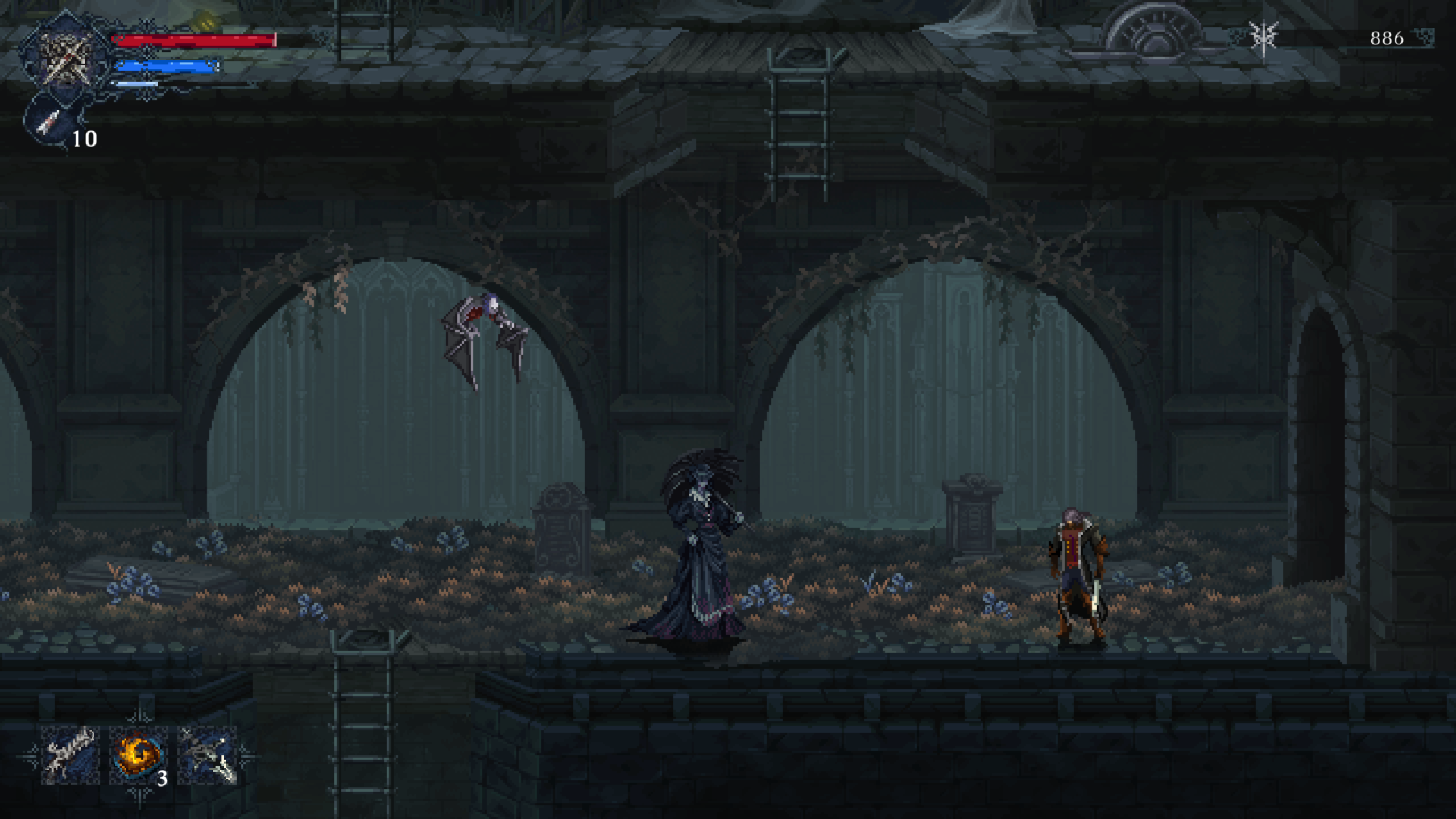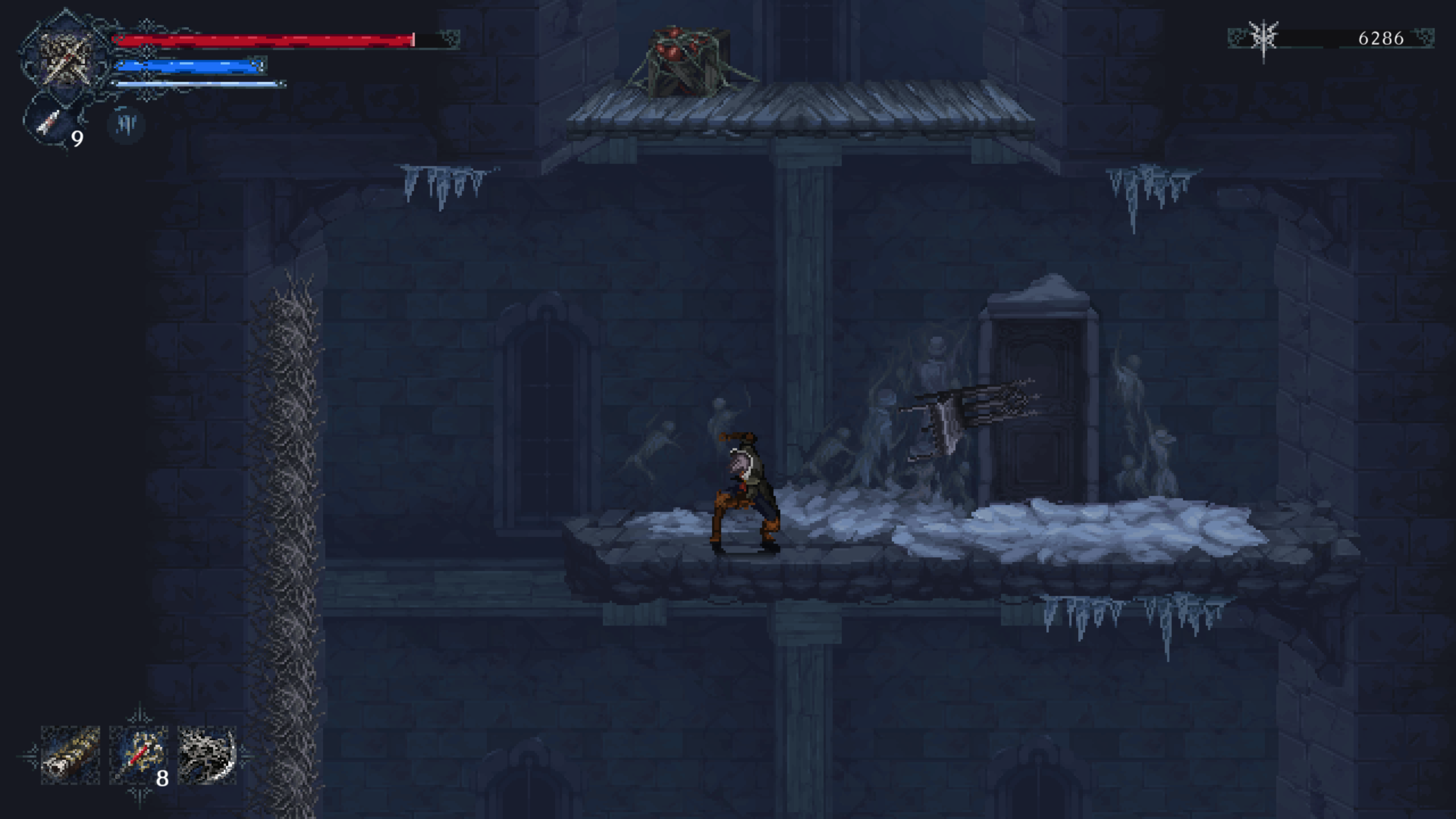Our Verdict
The Last Faith is a beautiful but inconsistent rehash of older, better games.
PC Gamer's got your back
It all starts off so well for The Last Faith, another entry in the growing "Fine, we'll make our own Bloodborne for PC" subgenre. A new dark fantasy game that makes me go shopping with my own XP? One more moody adventure steeped in blood? Another chance to fell gigantic bosses with too many insides on their outsides and celebrate with a bit of NOUN VERBED text afterwards?
What is it? A copy of FromSoftware's homework with added Alucard
Release date November 15, 2023
Expect to pay $28 / £25
Developer Kumi Souls Games
Publisher Playstack
Reviewed on Intel i9-13900HX, GeForce RTX 4080 (laptop), 16GB RAM
Steam Deck TBA
Link Official site
Yes please.
The Last Faith's pixel art is ridiculously lush, every single location dripping with melancholy gothic atmosphere. There are more forgotten cemeteries and dribbly candles in here than Morticia Addams' sweetest dreams. Purely as a visual work of art, The Last Faith ticks every box with a flourish. It's a shame the rest of it is about as fresh as the living dead that roam its halls.
The game's recurring problem is that it often does things because FromSoftware (and, to a lesser extent, Konami's Castlevania: Symphony of the Night) did them first, but it never really wonders why they did them, or if it can make good use of those ideas. At times The Last Faith lacks the level of polish required to convincingly pull off its copy job.
The Last Faith's story is particularly guilty: Like Bloodborne it's mostly told through a combination of frill-cuffed NPCs and scattered item descriptions, although unlike in Bloodborne every sentence seems to have been written as if the driving question behind it was "How did Bloodborne handle this?" and not "Is this conveying a tiny sliver of The Last Faith's story in an entertaining way?" I never believe anyone's talking in quasi-Catholic grandiloquence jumbled with Lovecraftianish mysticism for any reason beyond "they're supposed to."
Like the presentation, the fights between these empty sentences start off promisingly. Gruff main character Eryk handles in much the same way Dracula's beautiful undead son did back in 1997, complete with dramatic silhouette whenever he backdashes to safety. His standard-issue dodge roll with generous invincibility feels nice and snappy, and in one rare example of brilliance The Last Faith sidesteps Bloodborne's boring-but-essential post-death farming runs for healing items by having a small supply of blood vials healing injections appear nearby whenever Eryk falls to a major boss and reawakens at the last save/teleport point he passed.
Then the problems start popping up again. This game's guns lack the sense of purpose of Bloodborne's beautifully tuned counter mechanic. Here, guns are just limited-use ranged weapons in a game where I'll always last longer and hit harder if I get right up in a monster's fanged face. The timing on Last Faith's parry is so tight and poorly telegraphed—the description for this technique only says "a well timed hit" is needed, whatever the heck that means—that I soon gave up on it, and I am the sort of person who will happily spend entire games parrying everything in sight if given half the chance.




Another under-explained feature is Eryk's stats. Dexterity and Vitality have been used by games since forever so I can make an educated guess about those, but what, exactly, are Fate and Instinct for? FromSoftware's games can rely on an eager army of fans to discover and dissect this information and then share it with the world. A lot of that's down to luck: Demon's Souls was the right weird game at the right weird time, and everything that followed built on its bones. Without that history, The Last Faith feels obtuse in places just for the sake of it, and the lack of definitive information made informed decisions more difficult than necessary, and confidence in my character build almost impossible. If I don't know what something's for then I can't use it well, no matter how much I'd like to.
The enemies I'm supposed to vanquish with these techniques start off as interesting denizens of the night, but eventually devolve into frustrating assortments of misery. Some are completely invisible until they're on the verge of attacking. Some have been placed near tricky platforming sections just in case it looked like I was in danger of actually having some fun.
Worst of all are the monsters with ranged attacks—there are so many of them, and their spit and spells can often travel straight through the scenery with the homing capabilities of Agent 47's magic briefcase. But then some ranged attacks follow the contours of the landscape. Some stop dead when they come into contact with an obstacle. And there is no way of knowing which it'll be until it's too late. In a game where every blow counts, these inconsistencies cost lives, time, and precious goodwill.
Exploration has its own unique snags. My wanderings hit a roadblock at one point because I hadn't noticed that one essential piece of equipment had silently turned up in a vendor's shop, even though everything else I'd needed so far came from a chest hidden deep in some dark, foreboding place.





Once I had this item I was able to find new and interesting locations to throw lives at, butting up against The Last Faith's unpredictable logic over and over again. Sometimes a leap into the unknown would lead to a new subterranean area—but on others it only led to a bottomless pit or a floor covered with instant-kill spikes. Several areas contained some inscrutable mixture of the three. A quick check of the map is no help here, as on more than one occasion one room's bottomless pit was separated from a perfectly normal area beneath it by just a few pixels, an invisible and illogical line of "this kills you because we said so."
There are definitely brief flashes of a memorably eerie metroidvania in here. The trouble is, every time the game dares to do something that actually suits itself—close-range combat can feel bloody and physical, and there's a lovely dramatic cutscene early on where Eryk leaps straight through a stained glass window—it quickly course-corrects back to being a so-so 2D copy of Bloodborne with too many cheap deaths to be worth persevering with. There is a fine line between a thrilling challenge in a mysterious setting and soul-crushing repetition wrapped up in empty riddles, and The Last Faith chose the wrong side to live on.
The Last Faith is a beautiful but inconsistent rehash of older, better games.

When baby Kerry was brought home from the hospital her hand was placed on the space bar of the family Atari 400, a small act of parental nerdery that has snowballed into a lifelong passion for gaming and the sort of freelance job her school careers advisor told her she couldn't do. She's now PC Gamer's word game expert, taking on the daily Wordle puzzle to give readers a hint each and every day. Her Wordle streak is truly mighty.
Somehow Kerry managed to get away with writing regular features on old Japanese PC games, telling today's PC gamers about some of the most fascinating and influential games of the '80s and '90s.


